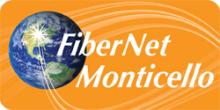Paul Bunyan Coop Brings Fiber to Rural Minnesota
Many people in rural areas get their phone services from a cooperative telephone company. When it comes to fiber in rural areas, some of these cooperatives are on the cutting edge. The July Issue of FTTH Prism [pdf] from Chaffee Fiber Optics has a feature on Paul Bunyan Telephone in Minnesota. They are an aggressive broadband network deployer in rural areas, often saving residents from Qwest or another company unable (sometimes just unwilling) to build these necessary networks.
Cooperative telephone companies fall into our understanding of publicly owned because they focus on their communities first and do not seek to maximize profits at the expense of social benefits.
Paul Bunyan Telephone is nearly 60 years old and now covers over 4,500 square miles. They have used RUS loans to finance significant portions of the network.
Currently, over 4,000 locations are served with our fiber-to-the-home network, which represents about 30 percent of our entire network. For these customers, thanks to the benefits of fiber optics, we can deliver high-speed Internet services up to 40 Mb (both upload and download) and a host of advanced television services including multiple streams of high-definition television, digital video recording, and on-demand services.For those who claim that people in rural areas just don't understand broadband or don't want it, this company has an answer:
One specific example the fiber optic network capacity can have on a business is Northwood DNA, Inc. This is a business operating in a very rural area, Becida, MN, that provides DNA sequencing and genotyping services globally. The services they provide require receiving and sending large data files electronically. Prior to the deployment of the fiber optic network, their business was only able to report two to three test results per day. Today, with the benefits of the all fiber optic network, they report over 50 test results per day.The full story starts on page 9 of the 2009 July FTTH Prism.



